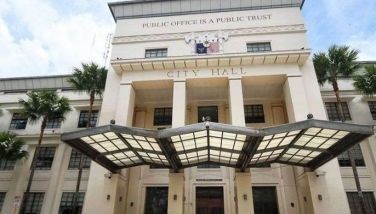UP-Cebu students, personnel stage protest
CEBU, Philippines - About a thousand students, teachers and workers of the University of the Philippines-Cebu yesterday walked out from their classes and work in protest of the “huge” budget cut in the UP system.
The UP students and employees gathered outside the campus, displaying banners of their demands to better quality education through free education, full-state subsidy, and additional budget, among others.
The protesters, led by the Nagkahiusang Kusog sa Estudyante-UP Cebu and All UP Academic Workers Union, denounced the move of the Department of Budget and Management (DBM) to decrease the proposed budget of 59 state colleges and universities (SUCs) in 2016.
Of all the SUCs, the UP system sustained the biggest budget cut amounting to P2.2 billion. This would be the fourth budget cut under the Aquino administration and is deemed to be the biggest. Last year, the administration decreased the budget for the UP system amounting to P1.43 billion.
During yesterday’s protest, the students and workers lambasted the Aquino administration for not giving priority to basic education, as shown in the proposed decrease in operating expenses of SUCs.
France Degamo, chairperson of the Nagkahiusang Kusog sa Estudyante, said proposed budget cuts in operating expenses of state schools may result in hikes in tuition and other fees.
“Instead na mahimong right ang education for public education, nahimo na nuan ang mga estudyante nga gatasan sa administration para i-supplement sa kulang na budget,” he said.
Tuition fees may increase up to P2,000 per unit from the current P1,000 per unit.
Based on the study commissioned by UP, Degamo said 40 percent of the total number of UPCAT passers do not show up during enrollment because of high tuition fees, cost of living, and socialized tuition system, which reportedly bars potential students to avail of free education since they still have to prove they can’t afford to pay tuition fees and belong to families under the lowest income bracket.
Syrum Joseph Quinto, a 2nd year biology student and deputy secretary for publicity and propaganda at UP, echoed the same sentiments of Degamo, saying that “poor” students will suffer more.
“The administration wants the SUCs to be self-liquidating or self-sufficient institutions, which means mokuha og tuition sa mga studyante for the school’s operations,” he said.
Aside from that, he said “quality” education would also be sacrificed because schools would less prioritize the maintenance and improvements of facilities, laboratories and the like.
Citing a local statistics result, he said SUCs need at least P16 billion budget to have a free tuition in state colleges.
He said P16 billion is only 0.01 percent of the P1.5 trillion intended for the military forces, death servicing and others programs of the government.
“Daghan funds sa ubang areas but for education gamay ra ang funding kuhaan pa gyod,” he lamented.
According to Professor Phoebe Sanchez, a UP faculty member and Vice President of All UP Academic Employees Union, this would also imply the downgrading of UP standard.
“Ang mahitabo mga paying students or rich ang mosulod but not the quality students. We need those who are deserving despite their incomes and those fighting for honors. Thus, the government should provide the voucher to the intellect of each student and let the universities compete for that student,” she said.
“But, what the Aquino administration is doing now is that it is cutting the budget for the education sector in favor of other sectors and the pork barrel is getting bigger but the budget for education is getting smaller,” she said.
With the budget cut, she said the tuition hike is not only the one to be expected, but some of the workers would be terminated as a result of lack of funding.
“We cut programs, the hiring of job orders and contractual employees like information technology personnel and even in positions that are necessary to the operations of the academe,” she said.
Another implication, she said is a call for “large” class size, where a teacher handles a class of 60 to 200 students from the usual number of 35 students per class. But the same amount will be paid to them.
“Alkanse ang maestro. Bukbukon ang maestro kay walay pundo ang gobyerno,” she added. (FREEMAN)
- Latest

























